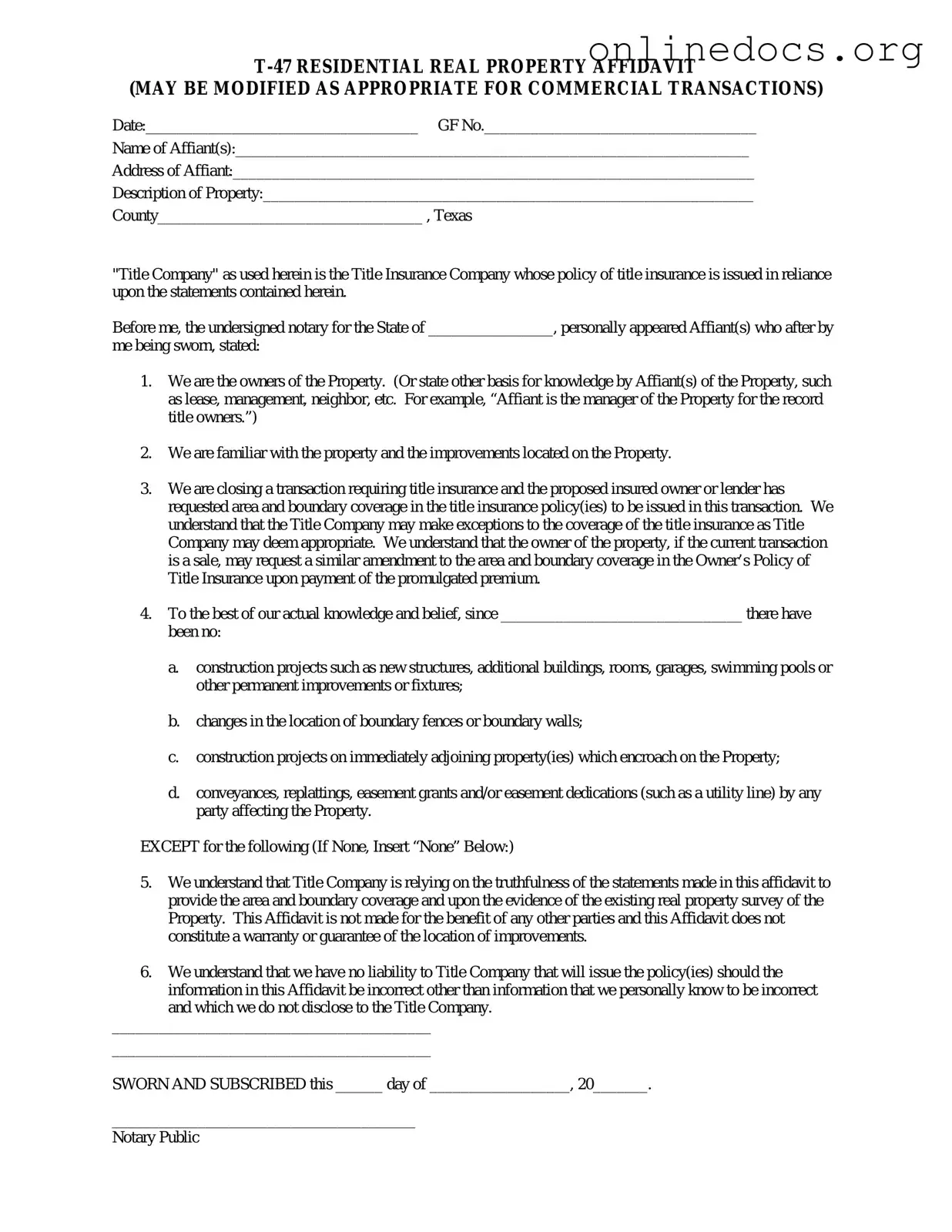The Texas residential property affidavit T-47 form is similar to the Texas Warranty Deed. Both documents serve to confirm ownership of property and provide a record of transfer. A warranty deed guarantees that the seller holds clear title to the property and has the right to sell it. The T-47 form, while not a transfer document itself, is often used in conjunction with warranty deeds to affirm that the property has not undergone any changes that would affect its title since the last transfer. This connection ensures that buyers receive a property free from undisclosed claims or liens.
When establishing a limited liability company (LLC) in California, it's essential to complete the necessary documentation, such as the californiapdfforms.com/operating-agreement-form, which provides essential guidelines for the management and operations of the business, ensuring that all members are aware of their roles and responsibilities.
Another document comparable to the T-47 is the Texas Quitclaim Deed. While a quitclaim deed transfers any interest the grantor has in a property without any warranties, it is often used when the parties know each other, such as in family transactions. Like the T-47, it can be used to clarify ownership and eliminate uncertainties about property rights. Both documents aim to protect the interests of the parties involved, albeit through different methods of conveying property interests.
The Affidavit of Heirship is also similar to the T-47 form. This document is used when someone passes away without a will, establishing the heirs of the deceased and their rights to the property. The T-47 can complement an Affidavit of Heirship by providing a sworn statement about the current status of the property, thereby reinforcing the heirs’ claims. Both forms help clarify ownership and provide a clear record for future transactions.
The Texas Property Disclosure Statement shares similarities with the T-47 in that both documents aim to provide transparency in real estate transactions. While the Property Disclosure Statement outlines any known issues with the property, the T-47 confirms that the property has not had any changes affecting its title. Together, they create a clearer picture of the property’s condition and ownership, helping buyers make informed decisions.
The Texas Title Insurance Commitment is another document that parallels the T-47. This commitment outlines the terms under which a title insurance policy will be issued. It provides a preliminary report of the property’s title status. The T-47 form serves to affirm that there are no undisclosed issues affecting the title, thus supporting the information found in the title insurance commitment. Both documents work together to ensure that buyers have a secure understanding of the property’s title.
Lastly, the Texas Lease Agreement can be viewed as a similar document to the T-47 in that both address property rights, albeit in different contexts. A lease agreement outlines the terms under which a tenant can occupy a property, while the T-47 confirms ownership status. When a property is leased, the T-47 can help clarify the owner’s rights and responsibilities, ensuring that all parties understand their legal standing. Both documents ultimately aim to protect the rights of property owners and occupants.
